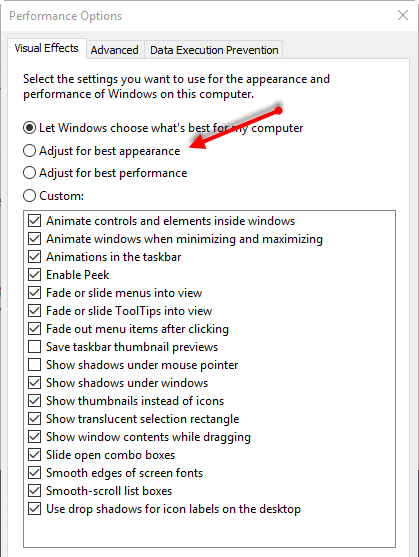How to Speed Up Windows 10
Windows 10 provides some great new options for maximizing productivity, and just as many new ways to potentially slow your hardware down. This page will give you some easy instructions to keep Windows 10 running smoothly.
I. Uninstall Bloatware (Impact Level: High, Time: 20 minutes)
Depending on the brand of computer you bought, your machine will have varying levels of unneeded software taking up space and computer cycles. Thankfully, uninstalling is easier than ever.
1. Click on Start Button
2. Click on All apps at the bottom,
3. Right-click on the (un)desired program and choose uninstall.
Alternatively, you can right-click on the Start button and choose Programs and Features from the top of the list. This will take you to the familiar program manager.
And it should go without saying, but make sure you know what you’re uninstalling and why. Programs bearing the name of your brand of computer is a good place to start, but the task manager will give you real-time details about what programs are using the most memory.
To access the task manager:
1. Click on Start button.
2. Type in Task Manager and click the top result
Program names will be on the left, with the details of their CPU/Memory/Disk/Network usage on the right. A quick internet search will help you verify any unknown programs you might find.
II. Limit Startup Processes (Impact Level: High, Time: 6 minutes)
Many programs now use side processes that start up alongside your PC. Few are actually worth having. They’re also a primary culprit for unexplained slowdowns. For this we’ll go back to the task manager.
1. Simply press Ctrl-Shift-Esc to access the Task Manager.
2. Switch over to the Startup tab.
3. Find Programs that have high or medium impact on your startup.
4. Right Click and Choose Disable.
III. Check for malware (Impact Level: High, Time: > 30 minutes)
The flurry of installations for any new operating system can create plenty of vulnerabilities for yourself in the future. To utilize Windows’ built-in scanner:
1. Click on Start button.
2. Click Settings
3. Click Update and Security
4. Click Windows Defender
5. In the right-hand panel, scroll down to Open Windows Defender and click.
6. Select Full Scan and let it run.
IV. Disk Cleanup (Impact Level: Medium, Time: 5 minutes)
Deciding what’s worth saving and what’s not is up to you, but it’s also easy for harddrives to become bloated with temporary files you might not know about. To quickly get rid of the needless clutter:
1. Click Start button.
2. Search for Disk Cleanup and click on the top result.
3. Select the drive you want to clean, then let the tool run.
V. Use High Performance Power Settings (Impact Level: Medium, Time: 1 minute)
Energy-efficient technology is important, but if you’re experiencing unwanted slowdown, it’s another area that might need attention.
1. Click Start button.
2. Click Control Panel, then System Security.
3. Click Power Options.
4. Select High Performance from the dropdown menu on the right side.
VI. The Performance Troubleshooter ( Impact Level: Medium, Time: 3 minutes)
If you find yourself at wit’s end, you might be relieved to see that Windows has some nice tools for locating performance problems.
1. Type troubleshooting in Cortana’s search box next to the Start button.
2. Select Check for performance issues.
3. Run this troubleshooter, and/or the others available: Hardware and Sounds, System Maintenance, Search and Indexing, and Programs
VII. No More Animations (Impact Level: Medium, Time: 30 seconds)
The final effort in speeding up any fancy new operating system inevitably comes down to making it a little less fancy. Windows 10 may offer a range of options for speeding things up elsewhere, but if your hardware is aging, this is still the tip that could boost your basic performance the most.
1. Type Adjust appearance in Cortana’s search box next to the Start button.
2. Use the Adjust for best performance radio button to lock in a basic setting.
Or:
3. Go through the list of visual features and uncheck any that you’re willing to lose, or that you suspect may be a burden to your computing habits. For example, there’s nothing *wrong* with keeping dozens of folders open, but if they’re all transparent, you’ll be in trouble.
That’s it for the basics, now get tinkering!
Resources:






